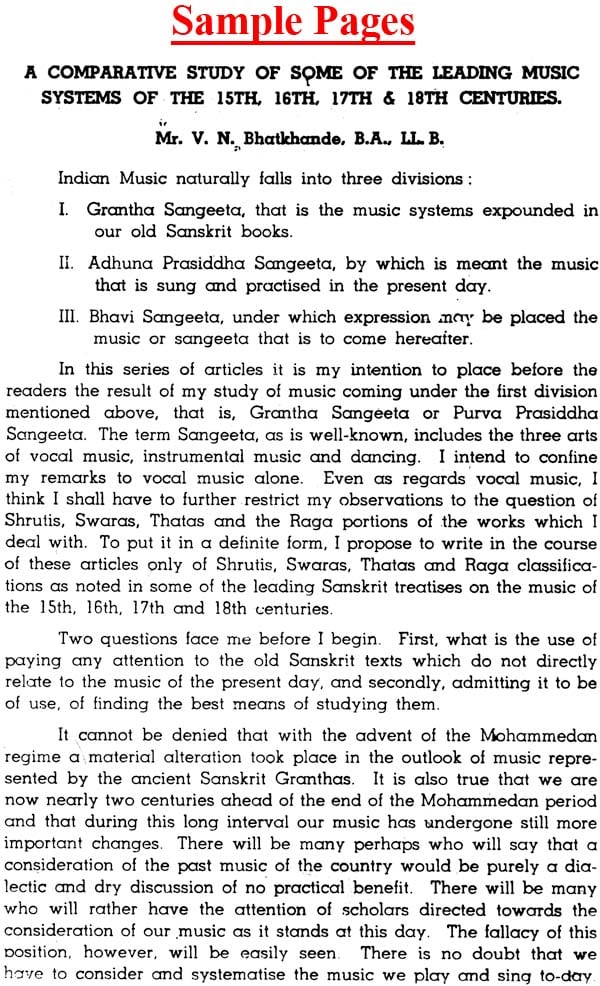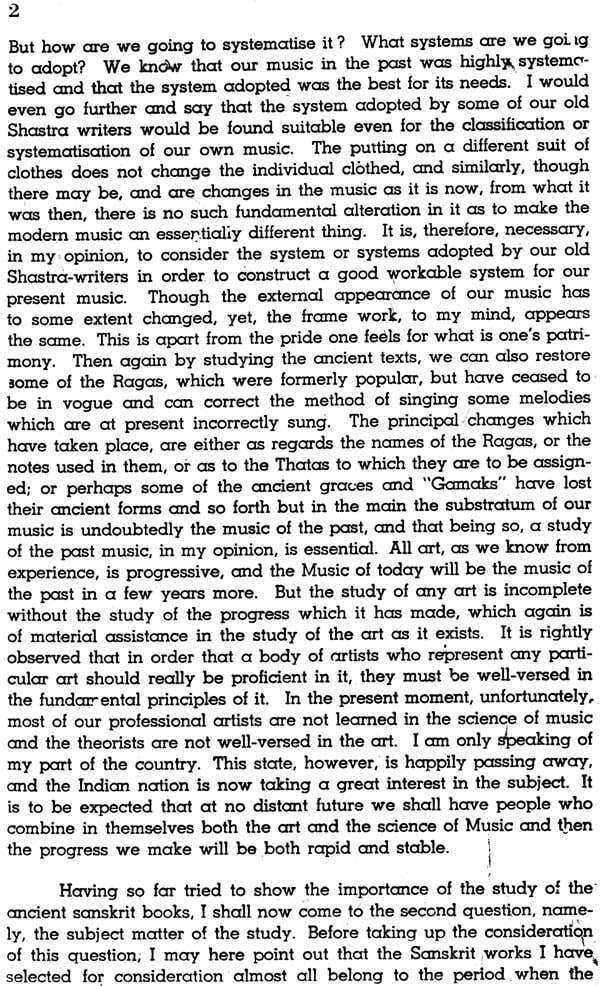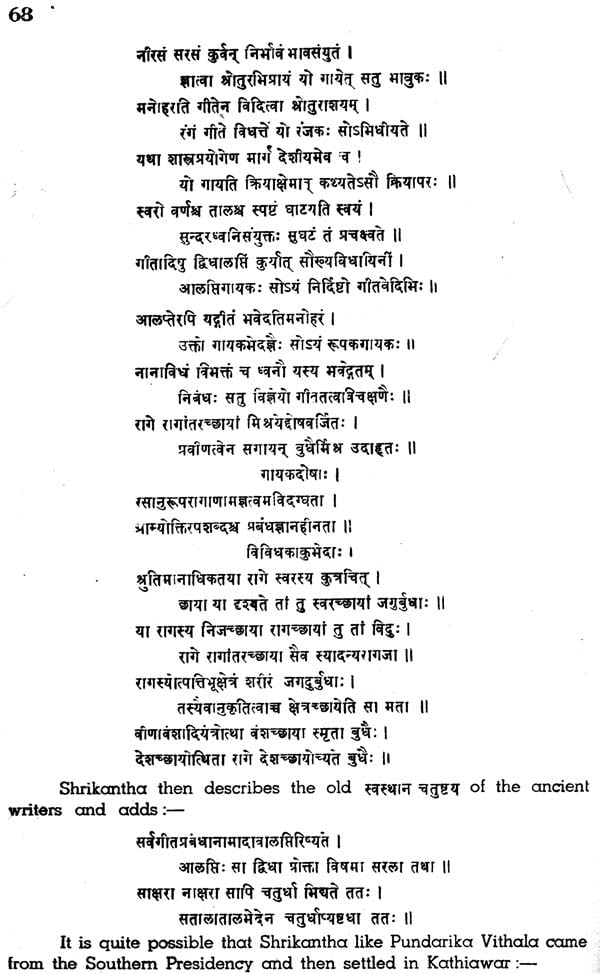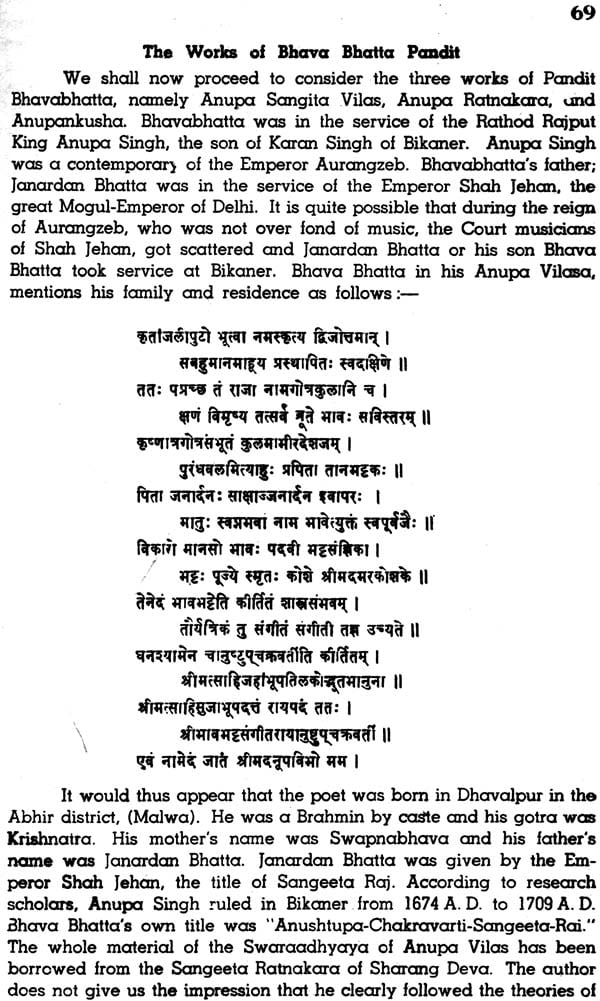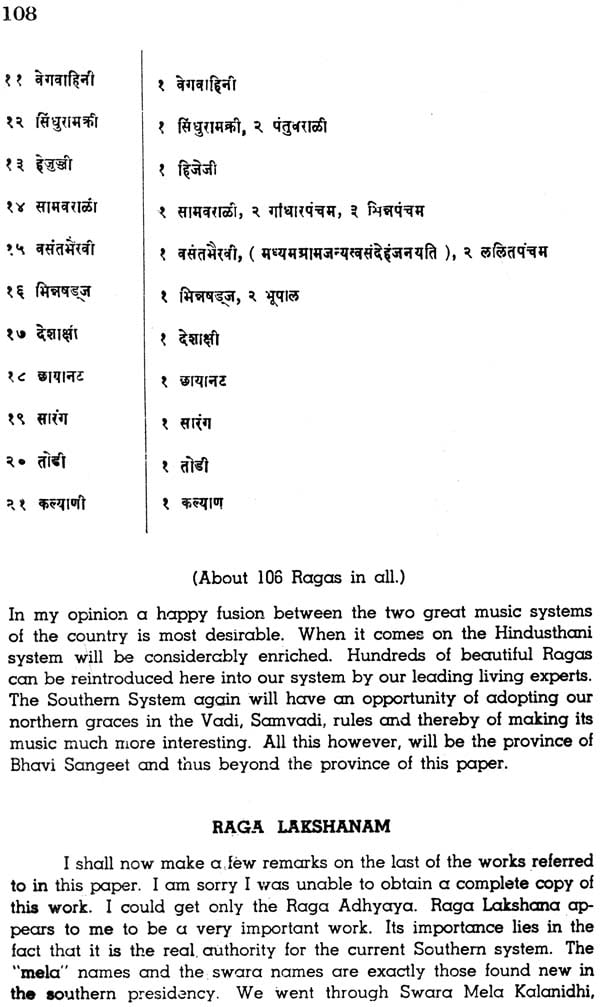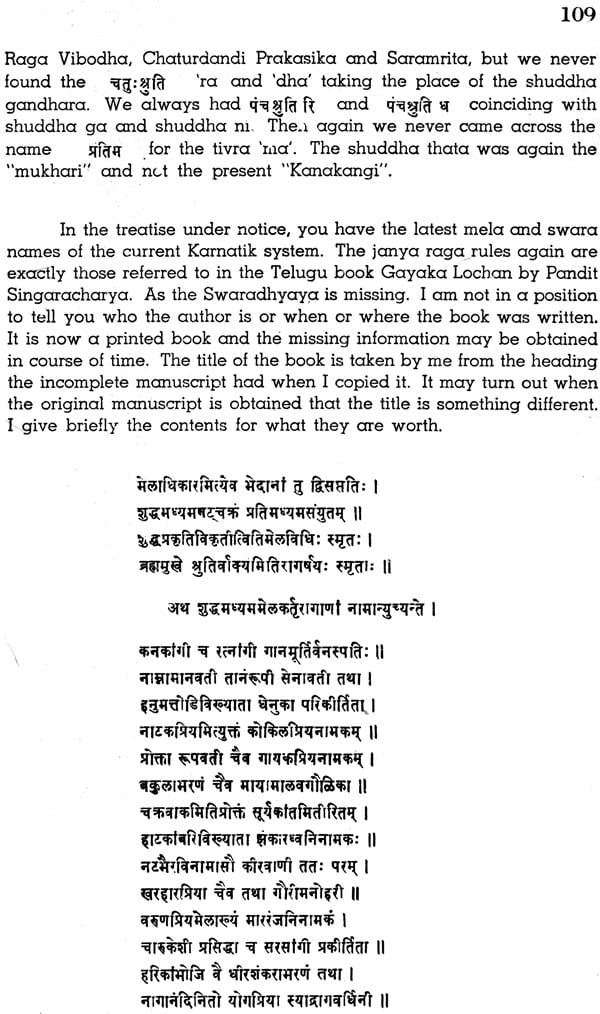
Music Systems in India (A Comparative Study of Some of The Leading Music Systems of The 15th, 16th, 17th, and 18th Centuries)
Book Specification
| Item Code: | NAP399 |
| Author: | V. N. Bhatkhande |
| Publisher: | Eastern Book Linkers |
| Language: | English |
| Edition: | 1989 |
| Pages: | 118 |
| Cover: | Hardcover |
| Other Details | 8.5 inch X 5.5 inch |
| Weight | 280 gm |
Book Description
About the Book
The book presents a comparative study of some of the leading systems of Music in India from the fifteenth to the eighteenth century A.D. Indian Music has been undergoing a marked change since very early times. The old system of grama, miirehana, jail of the grantha Sangita yielded place to Raga-Ragini or the Janya-Janaka theory, the Thata Raga of to-day. In Northern India the old Sruti system underwent a tremen-dous change. The Mahomedan rulers had brought with them their own system of Music with new melodies, new styles of interpretation, new types of songs, new Talas which in course of time got fused with Hindu Music and gave rise to modern Hindustani Music.
The present book deals with the exposition of grantha Sangita, that is, of Srutis, Svaras, Ragas etc. as noted in some of the leading Sanskrit works on the subject from the 15th to the 18th Century A.D. It takes up a number of works in Sanskrit and analyses their contents, while on some important issues it offers useful comments. It attempts to provide a missing link between the old tradition and the current practice, exploring the causes which brought about renaissance or reformation. It is a source book helpful to the student of research and even to the moderate lover of Music.
These short commentaries of the Sangit a Granthas of the past ages form a very valuable contribution to the music literature of modern times. In these the author has left behind a smooth path for a student of the past history of our music through the labyrinth of the ever changing system of Raga-Raginis. Indeed, had it not been for the late learned Prof. Bhatkhande's persistent application to the study of the old literature on the subject with a definite aim at solving the diverse and therefore mysterious and baffling methods of explanation of a common topic with which it is filled perhaps the history of our music of the past centuries would have remained oblivious to us today. Ever since the time of the Sangita Ratnakara our music had been going through a process of reformation as it were. The old system of Grama-Mnrchand-Jati was abandoned and gave place to the Raga-Ragini or the Janya-Janaka (Thata-Raga) theory. In Northern India the Mahomedan rulers proved to be great patrons of music and dancing. They brought with them their own music which, as it always happens in this country, was as-similated into the then Hindu music. New melodies, new styles of interpretation, new types of songs, new Talas were introduced. Thus today we have got what we know as Hindustani music which is a beautiful monument of the fusion of Hindu and Islamic Culture.
In the midst of this reformation a few Granthas expounding the system of music in vogue in their respective times were written. Two of these, Ahobala's Sangita Parijata and Somanatha's Raga-vibodha had already been published when Prof. Bhatkhande took up the study of the Granthas. This does not however mean that they were understood by anybody. In their anxiety to link up the ancient system of music with that current in their own days the authors of these Granthas have rendered themselves difficult to understand. E. G. Soranath explains his music scale in terms of gratis as the ancients did. As to what was his exact interval of the 8ruti he is mum. He bases his theory on a chromatic scale which is current today in the south as Mukhari and describes his flats and sharps with reference to this scale. In the north even perhaps at Somnatha's time a diatonic scale had already been adopted as the standard scale. Ragavibodha was therefore difficult for the northerners to understand. Similarly, Ahobala dutifully accepts the grutis and Morchanas of the ancients and describes them in elaborate details in the Svaradhyaya. When however he comes to the Ragadhydya he quietly selects from the Svaradhydya whatever had a practical bearing on the music current in his time and throws the rest of the bundle overboard. Even the facts that Somnath's standard scale was like the Mukhari scale of the Karnatak system of music and that Ahobala's standard scale was like the Kaphi of the Hindustani system of music were hardly discovered before Professor Bhatkhande's commentaries on these Granthag, namely Ragavi-bodha-Pravesika and Parijata-Pravsika came out. At least there is no record to prove it.
Under such circumstances it was but natural that the literature of our music of the past should have remained unattended to so long.
These articles deal with over a dozen Granthas and give enough information which makes it quite easy to understand them. Some portion of this book has already appeared in print in Sangita' the Journal of the Morris College of Hindustani Music, Lucknow. But unfortunately the Journal having ceased to appear after the fifth issue of this book remained unpublished until the late Mr. Malchandra Sitaram Sukthankar the editor and publisher of the Kramik Pustak Malika thought of bringing the whole series out into a book form. This volume was half way through the press when unfortunately Mr. Sukhthankar fell ill and died in April, 1940. The printing was taken up again a few months ago Coming, as it is, from the pen of the foremost authority on the subject, it need hardly be added that this book will prove a very interesting and enlightening study.
Contents
| Indian Music Systems | 1 |
| Raga Tarafigini | 13 |
| Hrdaya Kautuka and Hrdaya Prakasa | 22 |
| Sangita Parijata | 30 |
| Raga Tattva-Vibodha | 36 |
| Sadraga-Candrodaya | 42 |
| Ragamala | 51 |
| Raga Manjari | 56 |
| Rasa Kaumudi | 61 |
| Works of Bhava Bhatta Pandita | 69 |
| Anima Sangita Ratnakara | 72 |
| Anima-Atkuga | 74 |
| Svara-Mela-Kalanidhi | 77 |
| Raga-Vibodha | 88 |
| Catur Dandi Prakasika | 96 |
| Sangita Samrata | 102 |
| Raga Laksanam | 108 |
